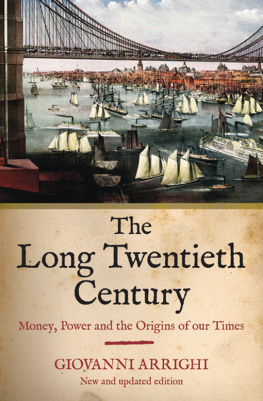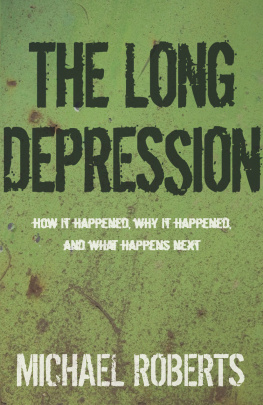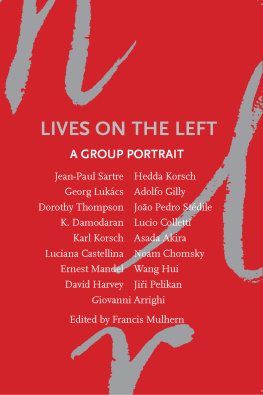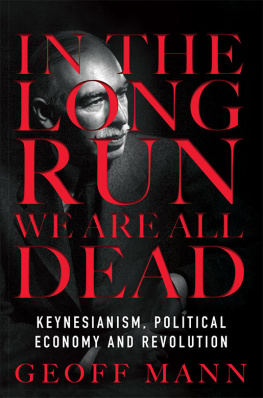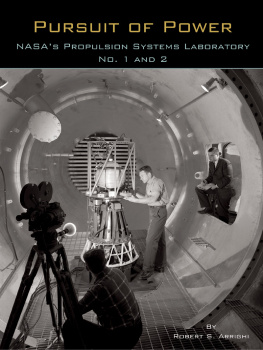Giovanni Arrighi - The Long Twentieth Century
Here you can read online Giovanni Arrighi - The Long Twentieth Century full text of the book (entire story) in english for free. Download pdf and epub, get meaning, cover and reviews about this ebook. year: 2010, publisher: Verso, genre: Politics. Description of the work, (preface) as well as reviews are available. Best literature library LitArk.com created for fans of good reading and offers a wide selection of genres:
Romance novel
Science fiction
Adventure
Detective
Science
History
Home and family
Prose
Art
Politics
Computer
Non-fiction
Religion
Business
Children
Humor
Choose a favorite category and find really read worthwhile books. Enjoy immersion in the world of imagination, feel the emotions of the characters or learn something new for yourself, make an fascinating discovery.
- Book:The Long Twentieth Century
- Author:
- Publisher:Verso
- Genre:
- Year:2010
- Rating:4 / 5
- Favourites:Add to favourites
- Your mark:
- 80
- 1
- 2
- 3
- 4
- 5
The Long Twentieth Century: summary, description and annotation
We offer to read an annotation, description, summary or preface (depends on what the author of the book "The Long Twentieth Century" wrote himself). If you haven't found the necessary information about the book — write in the comments, we will try to find it.
The Long Twentieth Century — read online for free the complete book (whole text) full work
Below is the text of the book, divided by pages. System saving the place of the last page read, allows you to conveniently read the book "The Long Twentieth Century" online for free, without having to search again every time where you left off. Put a bookmark, and you can go to the page where you finished reading at any time.
Font size:
Interval:
Bookmark:
The Long Twentieth Century

The Long Twentieth Century
Money, Power, and the Origins of Our Times
GIOVANNI ARRIGHI

First published by Verso 1994
This edition published by Verso 2010
Giovanni Arrighi 1994, 2010
New material Giovanni Arrighi 2010
All rights reserved
Verso
UK: 6 Meard Street, London W1F 0EG
USA: 20 Jay Street, New York, NY 11201
Verso is the imprint of New Left Books
ISBN-13: 978-1-84467-304-9
British Library Cataloguing in Publication Data
A catalogue record for this book is available from the British Library
Library of Congress Cataloging-in-Publication Data
A catalog record for this book is available from the Library of Congress
Typeset by Hewer Text UK Ltd, Edinburgh
Printed in the USA by Maple Vail
List of Figures
Preface and Acknowledgements
Introduction
- the three hegemonies of historical capitalism
Hegemony, Capitalism, and Territorialism
The Origins of the Modern Interstate System
British Hegemony and Free-Trade Imperialism
US Hegemony and the Rise of the Free Enterprise System
Towards a New Research Agenda - the rise of capital
The Antecedents of Systemic Cycles of Accumulation
The Genesis of High Finance
The First (Genoese) Systemic Cycle of Accumulation
The Second (Dutch) Systemic Cycle of Accumulation
The Dialectic of State and Capital - industry, empire, and the endless accumulation of capital
The Third (British) Systemic Cycle of Accumulation
The Dialectic of Capitalism and Territorialism
The Dialectic of Capitalism and Territorialism (Continued)
Reprise and Preview - the long twentieth century
The Dialectic of Market and Plan
The Fourth (US) Systemic Cycle of Accumulation
The Dynamics of Global Crisis
epilogue: can capitalism survive success?
postscript to the second edition
References
Index
1.1 Menschs Metamorphosis Model
2.1 Total Silver Coinage in England, 12731470
2.2 Trends in the Cloth Trade: Shipments from England and Production at Ypres
2.3 Mediterranean Routes of Genoa and Venice in the Middle ages
2.4 The Genoese Space-of-Flows, Late Sixteenth and Early Seventeenth Centuries
2.5 Volume of Grain Shipments through the Sound, 15621780
3.1 British Capital Exports, 18201915
3.2 The Sixteenth-century Trade Expansion
3.3 The Nineteenth-century Trade Expansion
3.4 Long Centuries and Systemic Cycles of Accumulation
3.5 Ideotypical Trajectory of Mercantile Expansions
3.6 Hicks Model of Mercantile Expansions
3.7 Bifurcation in the Trajectory of Mercantile Expansions
3.8 Model of Local Turbulence
3.9 Model of Systemic Turbulence
3.10 Metamorphosis Model of Systemic Cycles of Accumulation
4.1 US Trade Balance and Current Account, 18961956
4.2 US Gold Reserves and Short-term Liabilities, 195072
4.3 Outflow of Foreign Direct Investments of Developed Market Economy Countries Distributed by Geographical Regions of Origin, 195083
4.4 Long-term Interest Rates in the United States, 196584
E.1 The Rise of East Asia in Comparative Perspective
E.2 Income Gaps versus Industrialization Gaps
E.3 Rate of Increase of Accumulated Japanese Direct Foreign Investment
E.4 The East Asian Space-of-Flows, Late Twentieth Century
P.1 Evolutionary Patterns of World Capitalism
To my graduate students
at SUNY-Binghamton, 197994
This book began almost fifteen years ago as a study of the world economic crisis of the 1970s. The crisis was conceptualized as the third and concluding moment of a single historical process defined by the rise, full expansion, and demise of the US system of capital accumulation on a world scale. The other two moments were the Great Depression of 187396 and the thirty-year crisis of 191445. The three moments taken together defined the long twentieth century as a particular epoch or stage of development of the capitalist world-economy.
As I originally conceived this book, the long twentieth century constituted its exclusive subject-matter. To be sure, I was aware from the start that the rise of the US system could only be understood in relation to the demise of the British system. But I felt no need or desire to take the analysis further back than the second half of the nineteenth century.
Over the years I changed my mind, and the book turned into a study of what have been called the two interdependent master processes of the [modern] era: the creation of a system of national states and the formation of a worldwide capitalist system (Tilly 1984: 147). This change was prompted by the very evolution of the world economic crisis in the 1980s. With the advent of the Reagan era, the financialization of capital, which had been one of several features of the world economic crisis of the 1970s, became the absolutely predominant feature of the crisis. As had happened eighty years earlier in the course of the demise of the British system, observers and scholars began once more hailing finance capital as the latest and highest stage of world capitalism.
It was in this intellectual atmosphere that I discovered in the second and third volumes of Fernand Braudels trilogy, Capitalism and Civilization, the interpretative scheme that became the basis of this book. In this interpretative scheme, finance capital is not a particular stage of world capitalism, let alone its latest and highest stage. Rather, it is a recurrent phenomenon which has marked the capitalist era from its earliest beginnings in late medieval and early modern Europe. Throughout the capitalist era financial expansions have signalled the transition from one regime of accumulation on a world scale to another. They are integral aspects of the recurrent destruction of old regimes and the simultaneous creation of new ones.
In the light of this discovery, I reconceptualized the long twentieth century as consisting of three phases: (1) the financial expansion of the late nineteenth and early twentieth centuries, in the course of which the structures of the old British regime were destroyed and those of the new US regime were created; (2) the material expansion of the 1950s and 1960s, during which the dominance of the new US regime translated in a world-wide expansion of trade and production; and (3) the current financial expansion, in the course of which the structures of the now old US regime are being destroyed and those of a new regime are presumably being created. More importantly, in the interpretative scheme which I derived from Braudel, the long twentieth century now appeared as the latest of four similarly structured long centuries, each constituting a particular stage of development of the modern capitalist world system. It became clear to me that a comparative analysis of these successive long centuries could reveal more about the dynamic and likely future outcome of the present crisis than an in-depth analysis of the long twentieth century as such.
This recasting of the investigation in a much longer time frame has resulted in a contraction of the space taken up by the overt discussion of the long twentieth century to about one-third of the book. I have none the less decided to retain the original title of the book to underscore the strictly instrumental nature of my excursions into the past. That is to say, the only purpose of reconstructing the financial expansions of earlier centuries has been to deepen our understanding of the current financial expansion as the concluding moment of a particular stage of development of the capitalist world system the stage encompassed by the long twentieth century.
Next pageFont size:
Interval:
Bookmark:
Similar books «The Long Twentieth Century»
Look at similar books to The Long Twentieth Century. We have selected literature similar in name and meaning in the hope of providing readers with more options to find new, interesting, not yet read works.
Discussion, reviews of the book The Long Twentieth Century and just readers' own opinions. Leave your comments, write what you think about the work, its meaning or the main characters. Specify what exactly you liked and what you didn't like, and why you think so.

